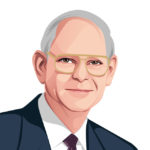Q. Is the senior housing industry up to the challenge of serving the middle market?
A. Yes, but creative thinking and innovative approaches will be required.
The middle market is comprised of older adults who have too much income to qualify for affordable or subsidized housing but cannot afford most of the private-pay options available in the market. They typically have incomes ranging from $25,000 to $75,000.
This affordability gap group is larger than the low-income and high-income groups combined and represents the fastest-growing segment of the senior market. It has been projected that the number of middle-income seniors aged 75-plus will nearly double by 2029 to 14.4 million.
Baby boomers are going to represent a significant portion of this middle market. The first boomers are turning 75 this year, and many have not saved enough money to get them through their retirement years. They have experienced life-changing events, including boom/bust cycles over the past 20 years, low savings rates and now the COVID pandemic. The future financial implications could be significant and will affect their ability to pay for senior housing.
Addressing these middle-market challenges will require creative thinking and innovative approaches. Some innovative solutions being investigated include public/private partnerships, repurposing existing/older buildings to senior housing, better use of technology and alternative service delivery systems.
This column appears as “You’ve Got Questions? We’ve Got Answers” in the June print issue.
Jim Moore is president of Moore Diversified Services Inc., a national senior living and healthcare consulting firm based in Fort Worth, TX, that has been serving clients for 50 years. He has written five books about senior living and healthcare, including “Assisted Living Strategies for Changing Markets” and “Independent Living and CCRCs.” He has published senior living bimonthly columns for the past 28 years. Moore may be reached at (817) 731-4266 or [email protected].


